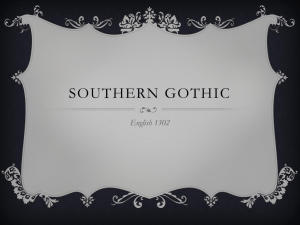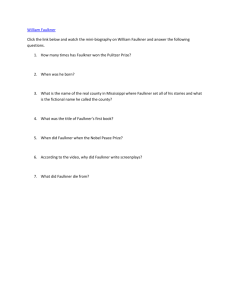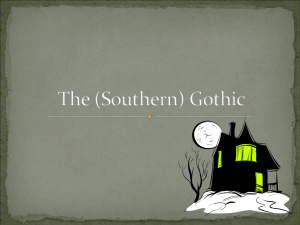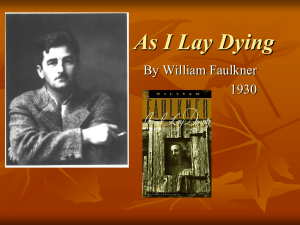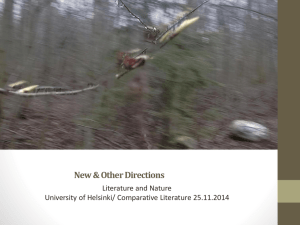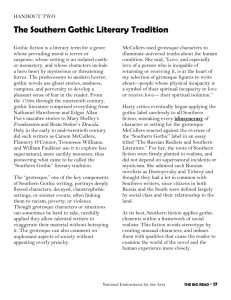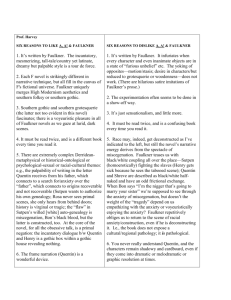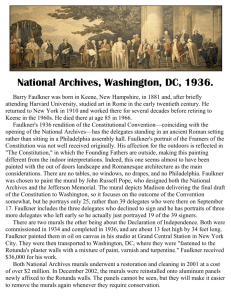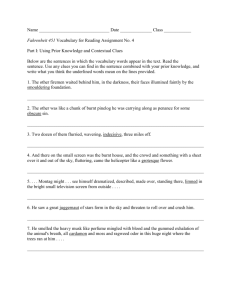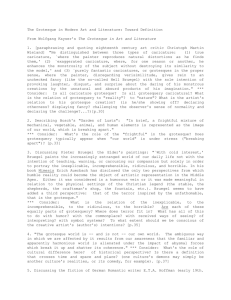I.1. Introduction: Early American Literature – The Period of
advertisement
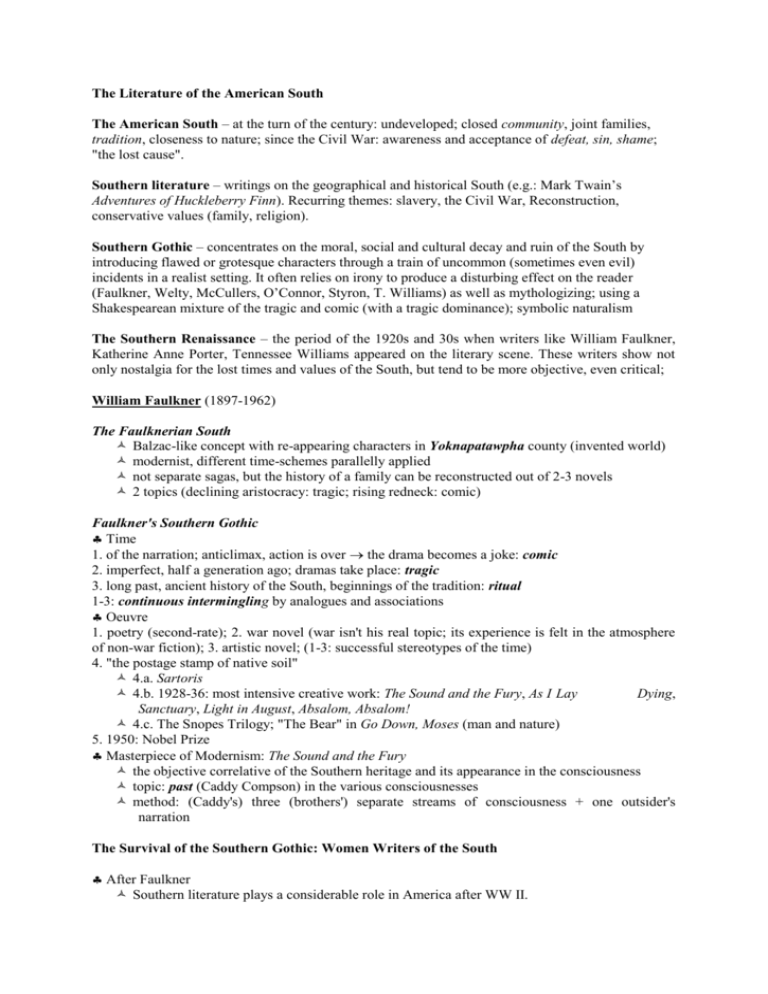
The Literature of the American South The American South – at the turn of the century: undeveloped; closed community, joint families, tradition, closeness to nature; since the Civil War: awareness and acceptance of defeat, sin, shame; "the lost cause". Southern literature – writings on the geographical and historical South (e.g.: Mark Twain’s Adventures of Huckleberry Finn). Recurring themes: slavery, the Civil War, Reconstruction, conservative values (family, religion). Southern Gothic – concentrates on the moral, social and cultural decay and ruin of the South by introducing flawed or grotesque characters through a train of uncommon (sometimes even evil) incidents in a realist setting. It often relies on irony to produce a disturbing effect on the reader (Faulkner, Welty, McCullers, O’Connor, Styron, T. Williams) as well as mythologizing; using a Shakespearean mixture of the tragic and comic (with a tragic dominance); symbolic naturalism The Southern Renaissance – the period of the 1920s and 30s when writers like William Faulkner, Katherine Anne Porter, Tennessee Williams appeared on the literary scene. These writers show not only nostalgia for the lost times and values of the South, but tend to be more objective, even critical; William Faulkner (1897-1962) The Faulknerian South Balzac-like concept with re-appearing characters in Yoknapatawpha county (invented world) modernist, different time-schemes parallelly applied not separate sagas, but the history of a family can be reconstructed out of 2-3 novels 2 topics (declining aristocracy: tragic; rising redneck: comic) Faulkner's Southern Gothic Time 1. of the narration; anticlimax, action is over the drama becomes a joke: comic 2. imperfect, half a generation ago; dramas take place: tragic 3. long past, ancient history of the South, beginnings of the tradition: ritual 1-3: continuous intermingling by analogues and associations Oeuvre 1. poetry (second-rate); 2. war novel (war isn't his real topic; its experience is felt in the atmosphere of non-war fiction); 3. artistic novel; (1-3: successful stereotypes of the time) 4. "the postage stamp of native soil" 4.a. Sartoris 4.b. 1928-36: most intensive creative work: The Sound and the Fury, As I Lay Dying, Sanctuary, Light in August, Absalom, Absalom! 4.c. The Snopes Trilogy; "The Bear" in Go Down, Moses (man and nature) 5. 1950: Nobel Prize Masterpiece of Modernism: The Sound and the Fury the objective correlative of the Southern heritage and its appearance in the consciousness topic: past (Caddy Compson) in the various consciousnesses method: (Caddy's) three (brothers') separate streams of consciousness + one outsider's narration The Survival of the Southern Gothic: Women Writers of the South After Faulkner Southern literature plays a considerable role in America after WW II. balance bw. naturalism and symbolism shakes: sensation + spiritualisation grotesque more and more spectacular on the surface, meaning beneath becomes more obscure Women Writers Ihab Hassan: they open "the tragic underground of our culture" short story writers in the first place; descriptions of tone (mood) Eudora Welty (b. 1909) a more rural South then Faulkner's, with loony, grotesque characters dream-like with humour topic: Southers tradition fades away from the Southern consciousness (“Petrified Man”) Carson McCullers (1917-1967) decayed provincial South (Georgia) topic: loneliness, lovelessness, nightmares of imagination physical-spiritual perversity, distortedness The Ballad of the Sad Café: combination of the grotesque and the dream-like; the grotesque is physically depicted here (deformed love /?/ story of deformed people) Flannery O'Connor (1925-1964) Catholic family in the Protestant South topic: religious mysticism; transcendentalism missing from people (“A Good Man is Hard to Find”; “Good Country people”; “Parker's Back”) grotesque parables, satyrical elements, visions; the grotesque is used to build the symbolic After 1950's: the uniqueness of the South in the standardized America fades and becomes a local color again (e.g. Walker Percy) Regionalism Willa Cather (1873-1947) Regionalist writer. She drew on her experience of the prairie (Nebraska). She wrote with sympathy about immigrants in the Mid-West. O Pioneers! – Depicting the lives of mainly Scandinavian immigrants. The story “Neighbour Rosicky” and the novel My Ántonia introduce Bohemian immigrants and show the contrast between Old World values and American ones, the difference between urban and farm-life. John Steinbeck (1902-1968) Sometimes regarded as a regionalist writer (California), social commentator. Nobel Prize winner (1962), like Faulkner and Hemingway. “California novels” – portray common people (e.g. paisanos, Okies), mainly migrant workers, during the Great Depression and the survival (or failure) of the American Dream. Of Mice and Men (1937) – Perhaps the most popular Steinbeck novel about a pair of migrant workers, George and Lennie and their dreams. The Grapes of Wrath (1939)–documents the plight and the dissolution of the Joad family (Okies from Oklahoma travelling to California) during the Great Depression. East of Eden (1952) – Analyzes the nature of good and evil
